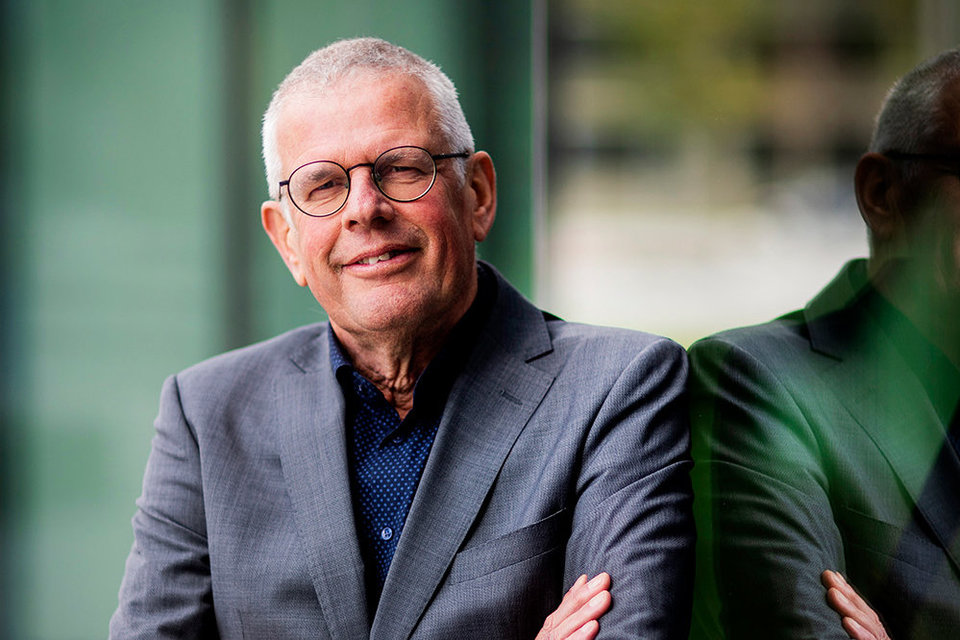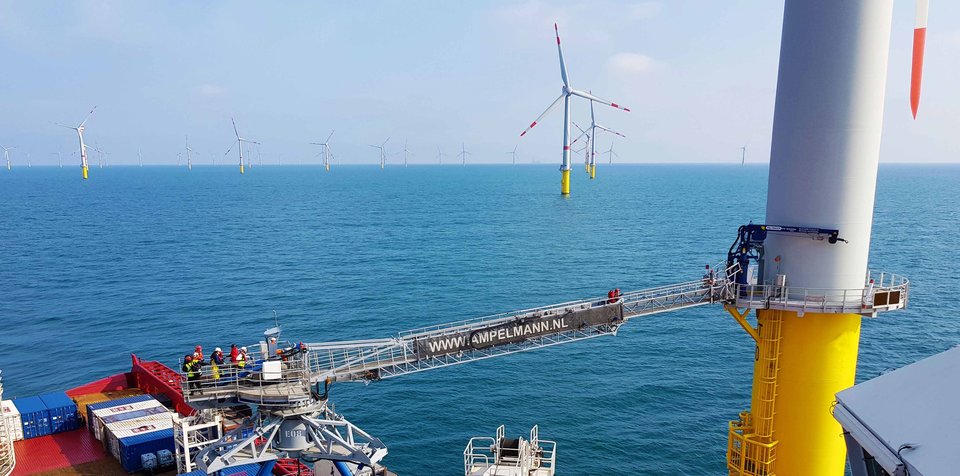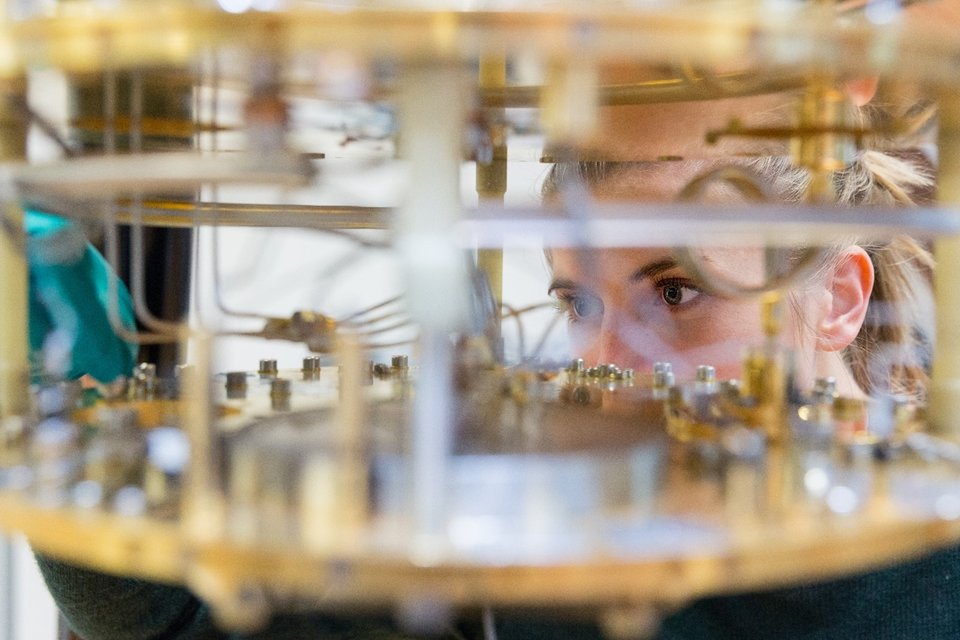Technology as an instrument for negative CO₂ emissions
Carbon dioxide removal (CDR) technologies remove more CO₂ than they emit. The technology is still in its infancy and researchers at TU Delft are pulling out all the stops to further progress these technologies. Using five questions, we will explain the basics of CDR.
By Emiel van Dongen • January 30, 2024

© Unsplash
1. What are negative emissions?
“Negative emissions occur when more greenhouses gases are removed than are emitted. This involves only CO₂, because the concentration of other greenhouse gases is so low that they cannot currently be captured,” says Andrea Ramírez Ramírez, professor of Low Carbon Systems and Technologies.
2. Why are negative emissions needed?
To meet climate targets, the concentration of CO₂ in the atmosphere must be reduced from its present level of 400 parts per million (ppm) to the pre-industrial level of 300 ppm. A Herculean task. Associate professor of energy technology, David Vermaas: “Reducing emissions is priority number one. 70 to 80 percent of the reduction should come from the transition from fossil to renewable energy sources. Avoiding emissions is always cheaper, more energy efficient, and smarter than removing CO₂ from the atmosphere or sea.”
Reducing CO₂ emissions to the maximum extent will take decades; the large-scale deployment of CDR will also take many years. Vermaas: “Almost everything can be made sustainable in the long run. Despite this, negative emissions are still necessary. Indeed some processes, such as agriculture, will always continue to emit CO₂ or a CO₂ equivalent. On top of that, we need to compensate for the high emissions of the past. CDR technologies should really only serve these purposes.”
3. What technologies are being used to tackle the CO₂ problem?
There are quite a lot, but only a small proportion lead to negative emissions:
- The best-known is the planting of forests.
- The most eye-catching is direct air capture and storage (DACS), although it is still in its infancy. With the help of chemical substances, CO₂ is filtered from the air and then stored.
- Direct ocean capture (DOC) filters CO₂ not from the atmosphere but from seawater, which contains much higher concentrations. Unfortunately, though, DOC still has a low technology readiness level (TRL).
- In the case of bioenergy with carbon capture and storage (BECCS), biomass that has captured CO₂ is burned to generate energy, with the CO₂ captured and stored.
- Biochar is another well-known CDR technology; putting a charcoal-like material into the ground stores the carbon and improves the quality of the soil.
- Mineralisation, in which CO₂ in rock is converted into solid minerals, is now mainly used for absorbing captured CO₂. This natural process can be accelerated by refining rocks.
- Carbon capture and utilisation (CCU) turns CO₂ that has been captured or removed into useful materials, such as building materials. At least, it can on paper. This is because CCU technologies are still very much in their early stages of development and inevitably face challenges, such as the availability of affordable green energy or hydrogen. If the CO₂ is stored for a longer period of time, CCU can lead to negative emissions.
- Finally, carbon capture and storage (CCS) without biomass should not be missing from this brief selection. CCS without biomass does not create negative emissions, but it can prevent many emissions in the short term. In industrial chimneys – where CO₂ concentrations are very high – the carbon dioxide is captured and then stored in empty oil and gas fields, for example.

4. What are the biggest obstacles to a large-scale impact?
The main stumbling block is that most technologies for removing and reusing CO₂ have a low TRL. Vermaas: “CCS and CDR have developed at a rapid pace in recent years. Many CDR technologies, such as DACS and DOC, will be up and running in five to ten years. But we also need completely new methods.”
A few companies are now able to remove CO₂ from the bottom line, but only because they get ‘free’ heat from the ground in Iceland, for example. But it comes at a cost: it is about fifty times more expensive than afforestation, although – unlike with forests – the CO₂ is stored for thousands of years. So far, only 10,000 tonnes of CO₂ have been permanently removed worldwide; according to the IPCC, this should be five to ten billion tonnes annually by 2050.
The only technology now making a significant contribution is CCS (but which leads ‘only’ to zero emissions at best). It is costly, but can have a significant short-term impact. The potential lies mainly in heavy industrial processes that are difficult to make sustainable.
One note of optimism is that governments and big companies alike are investing billions in CO₂ projects and businesses. And initiatives such as the Carbon XPrize, which awards millions of euros in ‘prize money’ to companies with much CDR potential, are creating a thriving start-up landscape. Much more funding is needed to sufficiently accelerate the development and deployment of CO₂ technologies, according to the two TU Delft researchers.
Ramírez Ramírez, one of the judges of the Carbon XPrize, says, “Government policies at international level are failing. Governments, knowledge institutes, social organisations, emitting companies, and CO₂ start-ups must work together intensively to promote research and development and to make CDR economically and financially attractive, as well as legally feasible.”
5. Why is it that negative emissions technologies are coming under criticism?
The concerns of many experts and NGOs about negative emissions technologies are many. They argue that it distracts attention from what is really at stake (reducing emissions), they doubt the scalability of technologies like DACS and BECCS, and they are concerned about CCS storage sites leaking.
Vermaas: “CDR should eventually start offsetting unavoidable emissions and historical emissions, but it is definitely not a ‘silver bullet’ for the climate problem. Reducing emissions is and will continue to be the most important thing: it is always better and less costly. The main message is that capture and disposal should never be seen as an alternative to reduction.”






